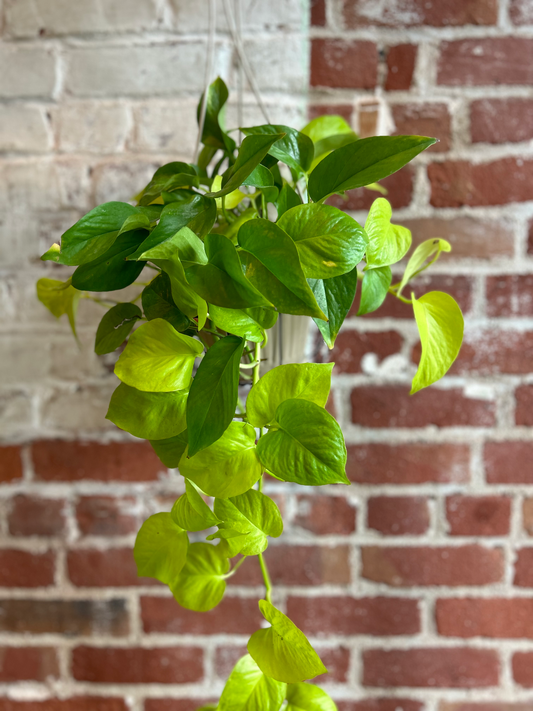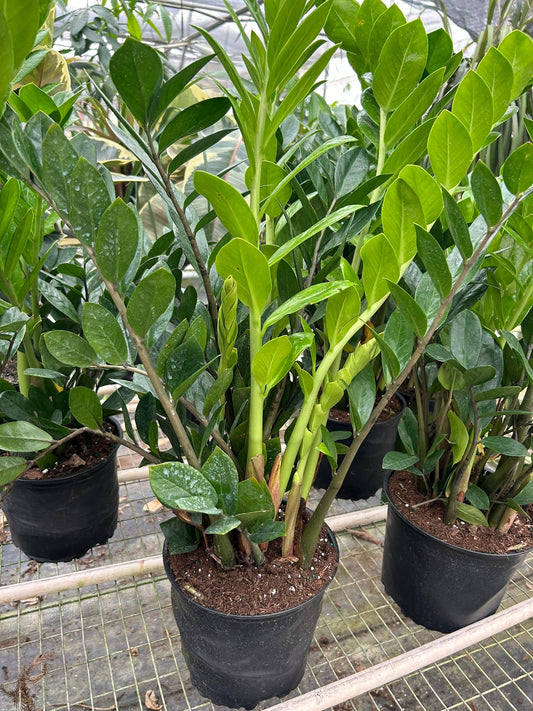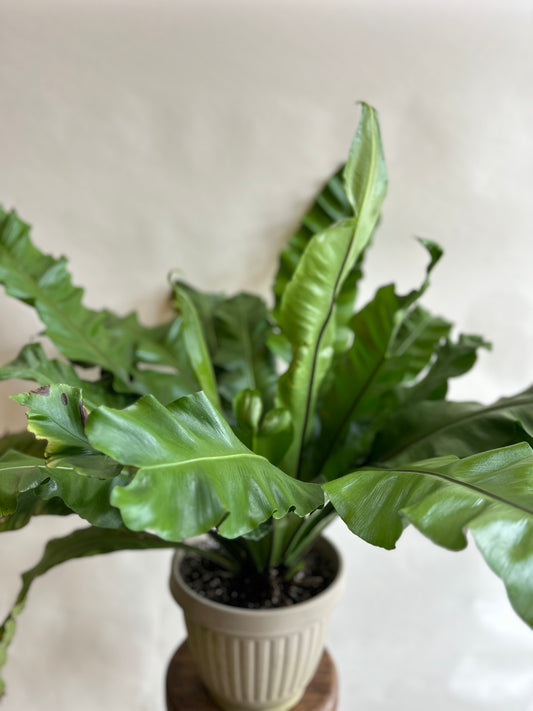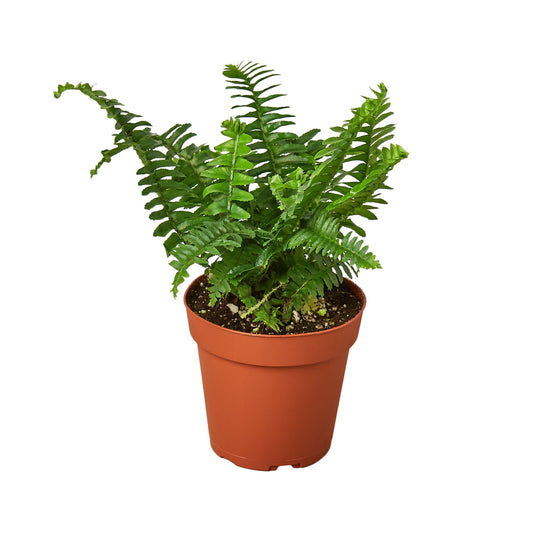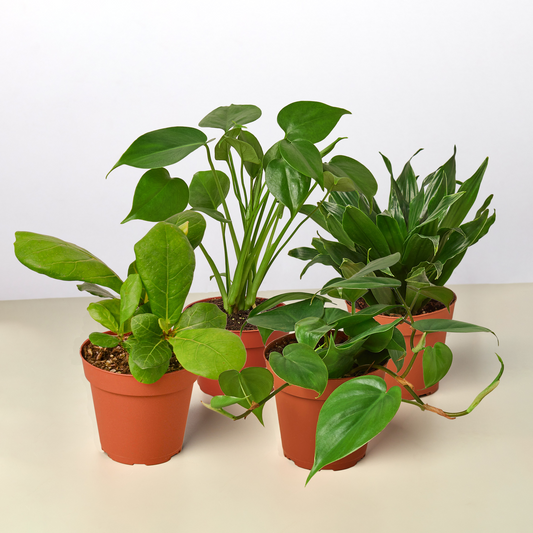How to Grow and Care for Monstera Lechlerianas
Cafe Planta Team
Monstera Lechleriana, with its striking foliage and tropical vibes, has become a favorite among houseplant lovers. Its lush leaves and easy-going nature make it a perfect choice for those looking to spruce up their indoor garden. If you're intrigued by this beautiful plant and want to learn how to nurture it, you're in the right place.
In the following sections, we'll explore everything you need to know to grow and care for Monstera Lechleriana. From its light and water needs to potting and pest management, we'll cover it all. By the end, you'll be ready to give your Monstera the care it deserves and enjoy its vibrant presence in your home.
Getting to Know Monstera Lechleriana
Let's start by understanding what makes Monstera Lechleriana so special. This plant belongs to the Araceae family and is native to Central and South America. Its name might sound a bit exotic, but it simply refers to the plant's unique characteristics and origins. Monstera Lechleriana is closely related to the popular Monstera Deliciosa, but it boasts a few distinct features that set it apart.
The leaves of Monstera Lechleriana are elongated and have a leathery texture, often displaying beautiful fenestrations or splits. These splits give the plant its signature appearance and help it survive in its natural habitat by allowing wind and light to pass through the foliage. This adaptation is both functional and aesthetically pleasing, making it a favorite among plant collectors.
While Monstera Lechleriana can grow quite large in the wild, reaching heights of up to 15 feet, indoor specimens typically stay more manageable, making them perfect for indoor spaces. With the right care, your Monstera can become a stunning focal point in your home, bringing a touch of the tropics to your living space.
Choosing the Right Spot
One of the first steps in caring for your Monstera Lechleriana is finding the perfect spot in your home. Light is a crucial factor in the health and growth of any plant, and Monstera Lechleriana is no exception. This plant thrives in bright, indirect light, mimicking the dappled sunlight it would receive under the canopy of a rainforest.
If your Monstera doesn't get enough light, you might notice its growth slowing down, or its leaves losing their vibrant color. On the flip side, too much direct sunlight can scorch the leaves, leaving unsightly brown spots. To strike the right balance, place your Monstera near a window with filtered light or a few feet away from a bright window.
Interestingly enough, Monstera Lechleriana can adapt to lower light conditions, but its growth will be slower, and the leaves may not develop as many splits. If you're aiming for that signature Monstera look, providing ample indirect light is the way to go. Don't forget to rotate the plant occasionally to ensure even growth on all sides.
Watering Wisely
Watering your Monstera Lechleriana is another important aspect of its care. While these plants are quite forgiving, they prefer a consistent watering schedule that keeps the soil slightly moist but not soggy. Overwatering can lead to root rot, a common issue that can be detrimental to your plant's health.
To get the watering just right, it's helpful to stick your finger into the soil about an inch deep. If it feels dry at that level, it's time to water. When you water, do so thoroughly, allowing excess water to drain out of the pot. This ensures that the roots are adequately hydrated without sitting in water.
On the other hand, letting the soil dry out completely between waterings can stress the plant and cause the leaves to droop. Keep an eye on your plant and adjust your watering schedule based on its needs and the environment. Factors like humidity, temperature, and light can all influence how quickly the soil dries out.
Potting and Soil Preferences
Choosing the right pot and soil for your Monstera Lechleriana can make a big difference in its growth and overall health. Like many tropical plants, Monstera prefers a well-draining soil mix that retains some moisture but doesn't become waterlogged. A good mix might include a combination of potting soil, perlite, and orchid bark, which offers the right balance of drainage and moisture retention.
When it comes to pots, make sure to choose one with drainage holes to prevent water from accumulating at the bottom. This is crucial in avoiding root rot, a common issue for many houseplants. You might also want to consider a pot made of a breathable material like terracotta, which allows excess moisture to evaporate more easily.
Repotting your Monstera Lechleriana every couple of years can help refresh the soil and give the roots more space to grow. Signs that it's time to repot include roots growing out of the drainage holes or the plant becoming top-heavy. When repotting, gently tease apart any tightly bound roots and place the plant in a slightly larger pot with fresh soil.
Fertilizing for Growth
To encourage healthy growth, fertilizing your Monstera Lechleriana during its active growing season is a good idea. This typically falls in the spring and summer months when the plant is putting out new leaves and potentially climbing to new heights.
A balanced, water-soluble fertilizer works well for Monstera. You can apply it every 4-6 weeks, following the package instructions for dilution. Be careful not to over-fertilize, as this can lead to nutrient burn and damage the plant's roots. If you're unsure, it's better to under-fertilize and observe how your plant responds.
During the fall and winter months, when growth naturally slows, you can reduce or even skip fertilization. The plant's nutrient needs are lower during this time, and you don't want to encourage new growth that might become weak or leggy due to reduced light levels.
Dealing with Pests and Problems
Like any houseplant, Monstera Lechleriana can occasionally fall prey to pests or other issues. Common pests include spider mites, scale, and mealybugs, which can all be managed with a little care and attention.
If you notice pests on your plant, start by gently wiping the leaves with a damp cloth to remove them. You can also use an insecticidal soap or neem oil spray, following the instructions on the product. Regularly inspecting your plant and keeping it clean can help prevent infestations from taking hold.
Another potential issue is yellowing leaves, which can be caused by overwatering, nutrient deficiencies, or even too much direct sunlight. Assess the plant's environment and care routine to pinpoint the cause, and make adjustments as needed.
Interestingly enough, brown leaf tips can be a sign of low humidity, which is common in indoor environments, especially during the winter months. Increasing humidity with a pebble tray or a humidifier can help keep your Monstera looking its best.
Pruning and Propagation
Pruning your Monstera Lechleriana isn't just about keeping it tidy; it's also an opportunity to encourage healthy growth and even propagate new plants. Regular pruning can help manage the plant's size, remove damaged or yellowing leaves, and stimulate new growth.
To prune, use clean, sharp scissors or pruning shears to cut back any unwanted leaves or stems. You can also trim aerial roots if they become unruly, though these roots are a natural part of the plant's growth and help it climb in its native habitat.
If you're interested in propagation, Monstera Lechleriana is relatively easy to propagate through stem cuttings. Simply cut a healthy stem with at least one node and place it in water or directly into soil. Keep the cutting in a warm, humid environment, and you'll likely see roots developing within a few weeks.
Incorporating Monstera Lechleriana into Your Home Decor
Beyond its care needs, Monstera Lechleriana offers a fantastic opportunity to enhance your home's decor. Its bold, architectural leaves make a statement, whether you place it in your living room, bedroom, or even a home office.
Consider using decorative pots or planters that complement your interior style. Monstera's size and shape make it a versatile plant that can fit into various design aesthetics, from modern and minimalist to bohemian and eclectic.
You can also use Monstera Lechleriana as a focal point in a room, drawing attention to its impressive foliage. Pair it with other plants of varying heights and textures to create a dynamic, layered look that brings a touch of nature indoors.
Creating the Perfect Environment
To truly thrive, your Monstera Lechleriana will appreciate an environment that mimics its natural habitat. This means providing adequate humidity, warmth, and air circulation. Monstera prefers temperatures between 65-85°F, so keeping your home within this range will keep your plant comfortable.
Humidity is another important factor. While Monstera can tolerate average household humidity levels, it will thrive in higher humidity. If your home tends to be dry, especially during the winter months, consider using a humidifier or placing a tray of water near the plant to increase moisture in the air.
Air circulation is crucial in preventing issues like mold or pest infestations. Position your Monstera in a spot that gets good airflow, and avoid crowding it with other objects or plants. A little attention to these environmental factors can make a big difference in your plant's health and appearance.
Final Thoughts
In summary, caring for Monstera Lechleriana involves providing the right light, water, soil, and environment. With a little attention and patience, you can enjoy a thriving plant that adds beauty and a touch of the tropics to your home.
At Cafe Planta, we're passionate about helping you care for your plants. Whether you're seeking unique houseplants, plant care accessories, or just some friendly advice, we're here to support you. Feel free to reach out via email or connect with us on Instagram. We believe plants bring people together and inspire us to connect with nature, and we're excited to share this journey with you.


